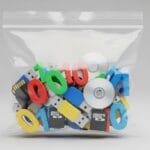

As much as you’d like to dive directly into your data, the best data analysts know that garbage in garbage out will be the phrase of the day if time isn’t spent cleaning the data first. With that in mind, here are a few important steps you’ll need to take to clean your survey data.
- The most important thing you can do during the data cleaning process is to save your dataset with a new name after every significant change. Save the original, untouched dataset with a specific name, e.g., “PetFoodSurveyRAW.” After that, add a number to the end of the name, e.g., PetFoodSurvey1, PetFoodSurvey2, PetFoodSurvey3, PetFoodSurvey4. You can never have too many versions, particularly when you realize at PetFoodSurvey17 that you made a mistake and need to return to PetFoodSurvey6.
- Run a frequency distribution of each variable. By looking for these specific issues, you will be able to determine whether your data was properly uploaded into the software, whether certain questions were coded incorrectly, whether the skip patterns functioned as planned, and whether certain people had difficulty responding. Look for:
- Numbers that are unexpectedly high or low
- Numbers that seem unrealistic given the question
- Responses that are rare
- Responses that were selected by no one
- Make sure numerical variables are defined as such, and not as string variables. Otherwise, anytime you ask for a frequency distribution, the numbers will not be in order and mistakes will happen. Improper definitions will also prevent some variables from being available for certain statistical analyses.
- Make sure that missing responses were not automatically recoded as valid responses by the statistical software. For instance, some software systems may change an empty cell into a zero which might actually be a real answer. This could change average scores and percentages in massive ways causing you to make massively incorrect generalizations.
- Check that every variable label matches the data. For instance, make sure that the label “Male” truly corresponds with the number “1″ assigned to it. Check EVERY variable.
- Lastly, apply your standard data quality process to remove any survey responses that don’t seem to have come from people who were paying close attention to their answers. Of course, you’ll need to make sure you’ve already included data quality questions in your survey.
Let the analyses begin!





